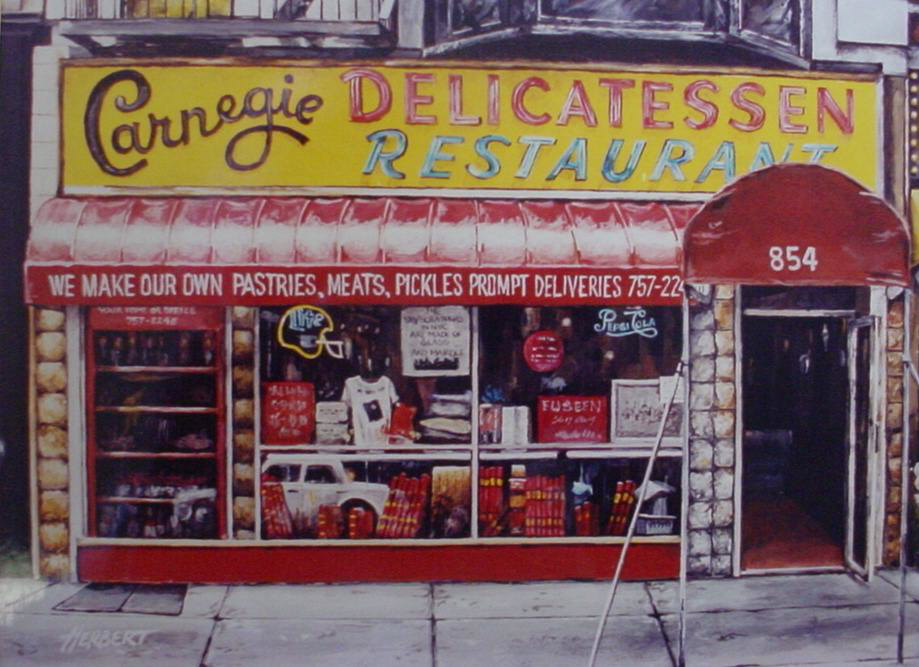Nostalgic America
20 Unforgettable Moments in Pop Culture History Through Stunning Images
By Bruce Berns · November 29, 2024

In this collection of 20 iconic photographs, we traverse through decades of memorable events that left an indelible mark on society. From Tiny Tim’s unconventional wedding on live television to Secretariat’s legendary Belmont Stakes victory, each image carries a unique story. These photographs go beyond aesthetics—they offer a portal into the cultural, historical, and emotional fabric of their times. Whether it’s the chaotic energy of Disco Demolition Night or the architectural marvel of the Hyatt Regency Atlanta, every picture evokes a vivid memory and sparks nostalgia.
Dive in to uncover the fascinating stories behind these enduring visuals and rediscover the moments that continue to shape our collective consciousness. Getty Images / Nostalgic America, Inc.
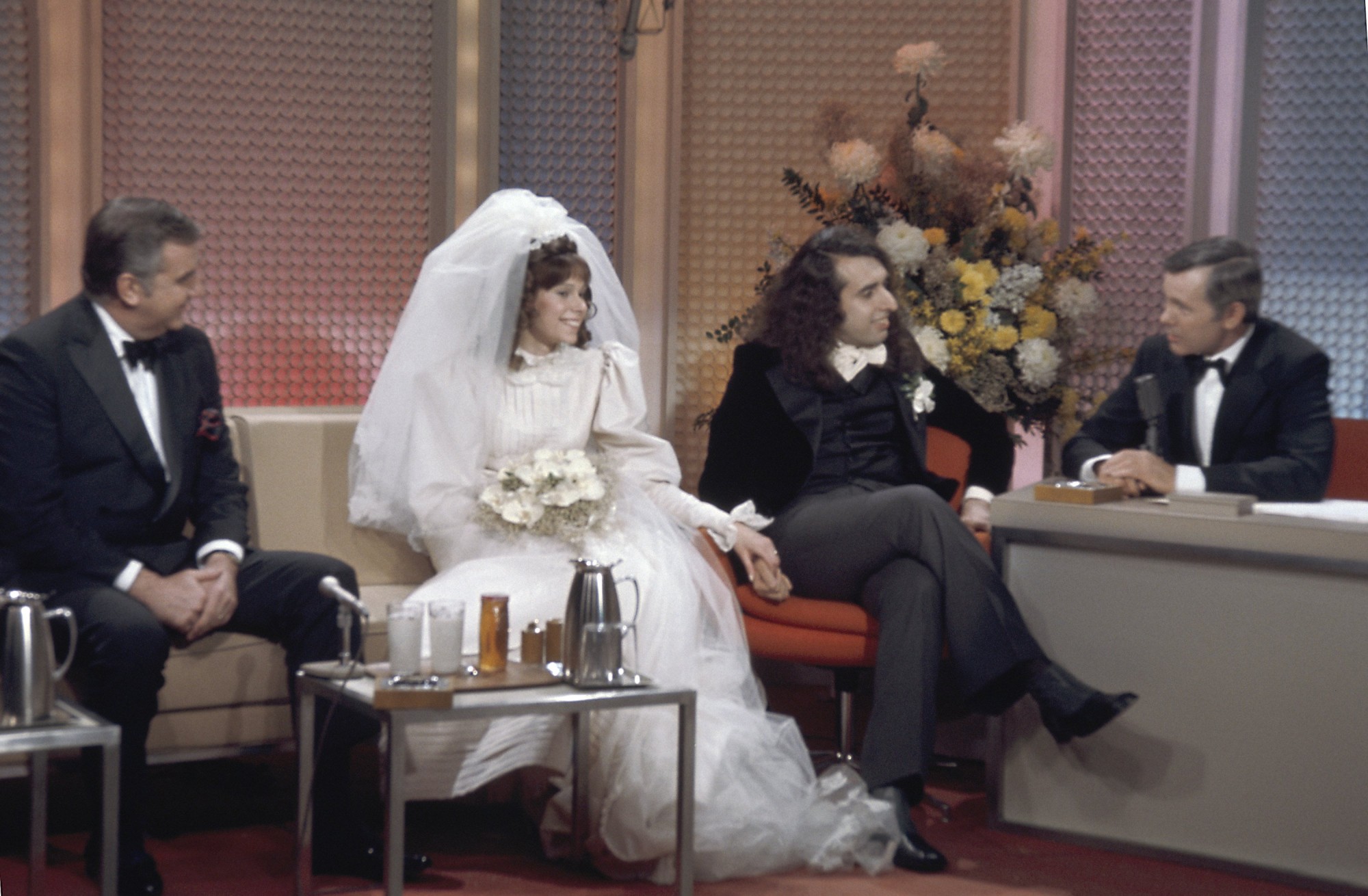
Tiny Tim Marries on The Tonight Show
On December 17, 1969, the eccentric entertainer Tiny Tim married his fiancée, Miss Vicki, on The Tonight Show Starring Johnny Carson. The event was a cultural sensation, with over 40 million viewers tuning in to witness the ukulele-strumming performer exchange vows. Tiny Tim, known for his falsetto renditions of songs like “Tiptoe Through the Tulips,” captivated audiences with his offbeat charm. The wedding brought a mix of humor and spectacle to late-night television, making it one of the most-watched moments in Tonight Show history. Despite the fanfare, their marriage was short-lived, ending in divorce several years later. Getty Images / Nostalgic America, Inc.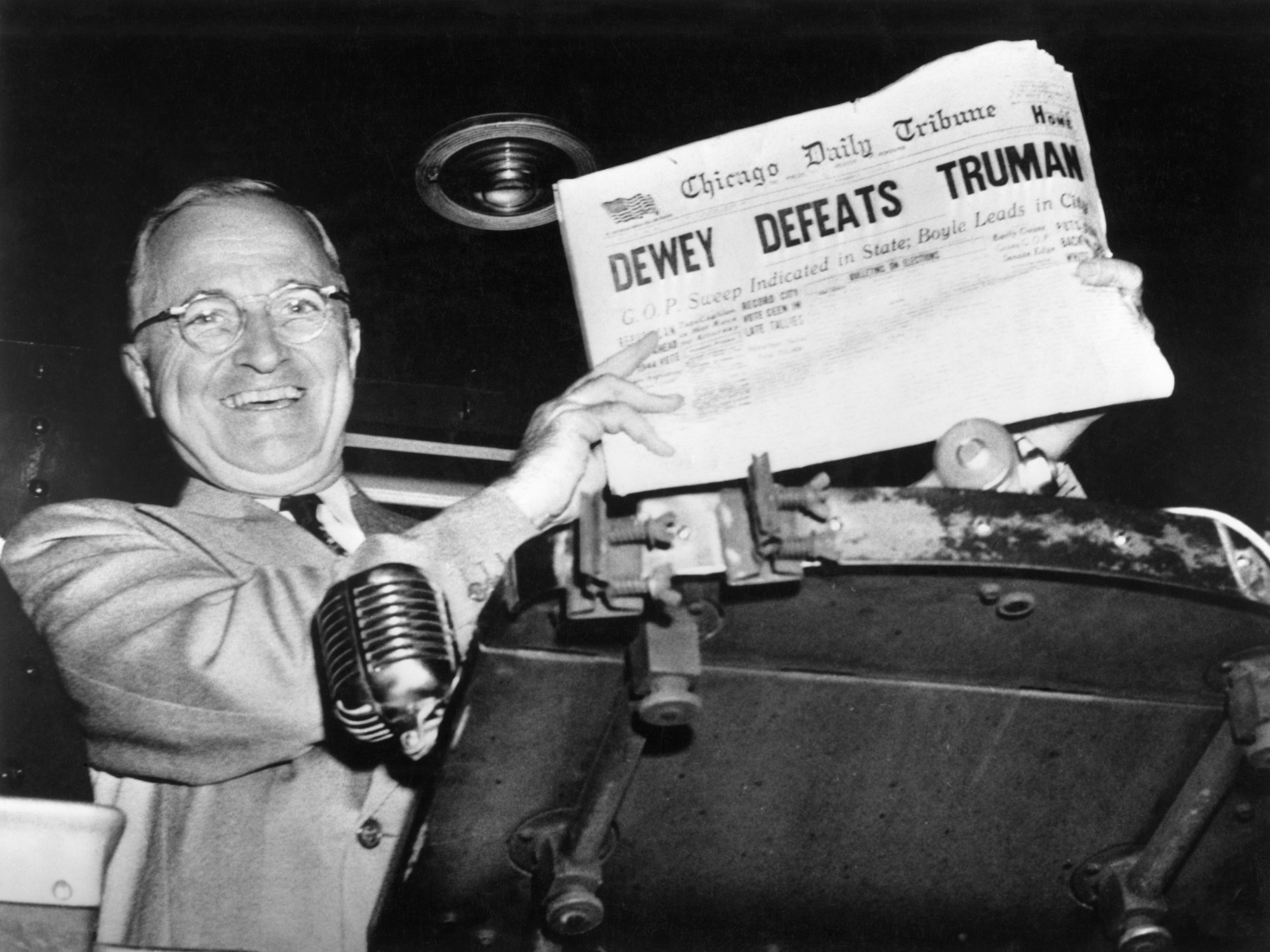
“Dewey Beats Truman”
The infamous headline “Dewey Defeats Truman” appeared on the front page of the Chicago Daily Tribune on November 3, 1948, prematurely declaring Thomas Dewey the winner of the U.S. presidential election. Contrary to the prediction, Harry S. Truman achieved a stunning victory, earning 303 electoral votes to Dewey’s 189. A photograph of a jubilant Truman holding the erroneous newspaper became an enduring symbol of media miscalculation. Truman’s upset win was attributed to his relentless campaigning and strong support from labor unions and rural voters. The headline remains a cautionary tale about overconfidence and the risks of early reporting. Getty Images / Nostalgic America, Inc.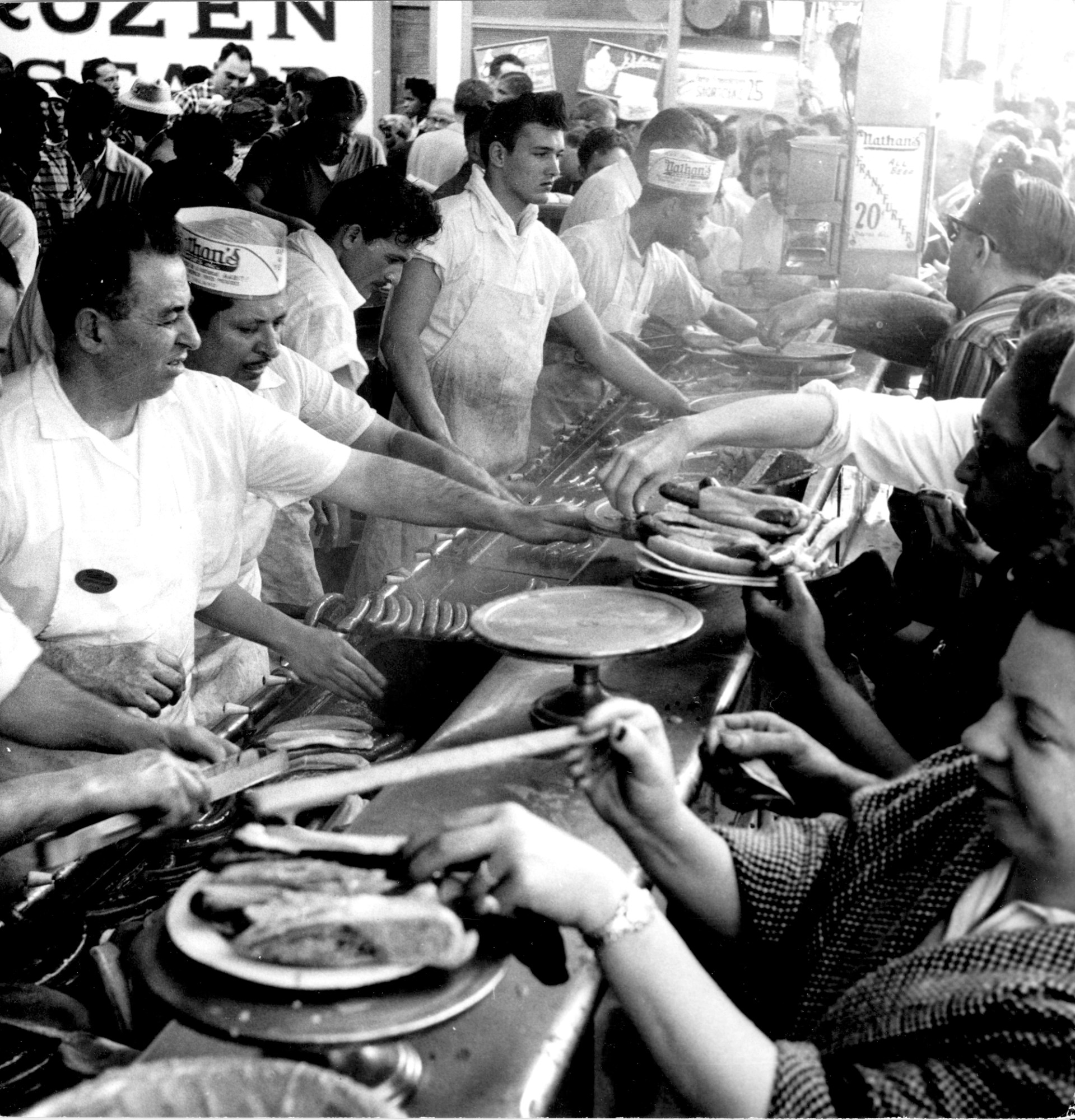
Nathan’s Hot Dogs in Coney Island
Nathan’s Famous, a hot dog stand founded in 1916 by Nathan Handwerker, became a Coney Island icon and an enduring symbol of American fast food. Located on Surf Avenue, it attracted crowds with its affordable 5-cent hot dogs and quality ingredients. Over the decades, Nathan’s evolved into a culinary institution, hosting the annual Fourth of July Hot Dog Eating Contest, which began in 1972. The stand's nostalgic charm and timeless appeal made it a cultural landmark, drawing locals, tourists, and celebrities alike. Nathan’s continues to represent the spirit of New York and the simple pleasures of a classic hot dog. Getty Images / Nostalgic America, Inc.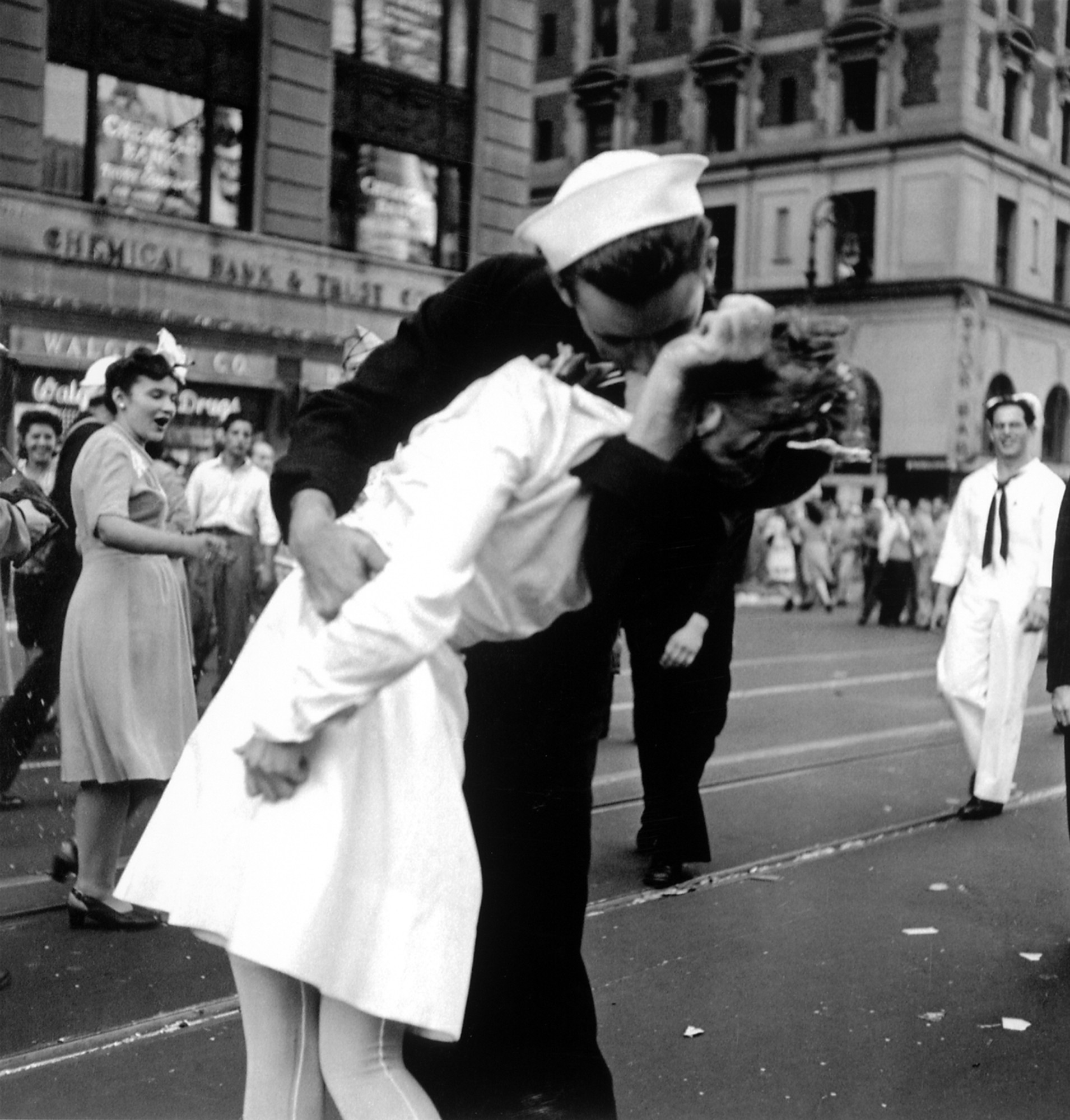
The Iconic Sailor Kiss Image
The iconic photograph of a sailor kissing a nurse in Times Square captured the euphoria of V-J Day on August 14, 1945, marking the end of World War II. Taken by Alfred Eisenstaedt, the image symbolizes spontaneous celebration and relief after years of conflict. Published in Life magazine, the photo became one of the most famous images of the 20th century. The identities of the couple remained uncertain for decades, adding to its mystique. While some have questioned its context, the photograph endures as a poignant representation of joy and the collective spirit of post-war America. Getty Images / Nostalgic America, Inc.
The Cyclone on Coney Island
The Cyclone, a historic wooden roller coaster in Coney Island, opened on June 26, 1927, and quickly became an icon of American amusement parks. Known for its steep drops, sharp turns, and thrilling speeds, it continues to draw adrenaline seekers. Designed by Vernon Keenan and built by Harry C. Baker, the Cyclone features a 26-meter first drop and a top speed of 60 mph. Despite its age, it remains one of the world’s most beloved roller coasters, earning landmark status in 1988. The Cyclone epitomizes the nostalgia and excitement of summer fun at Coney Island. Getty Images / Nostalgic America, Inc.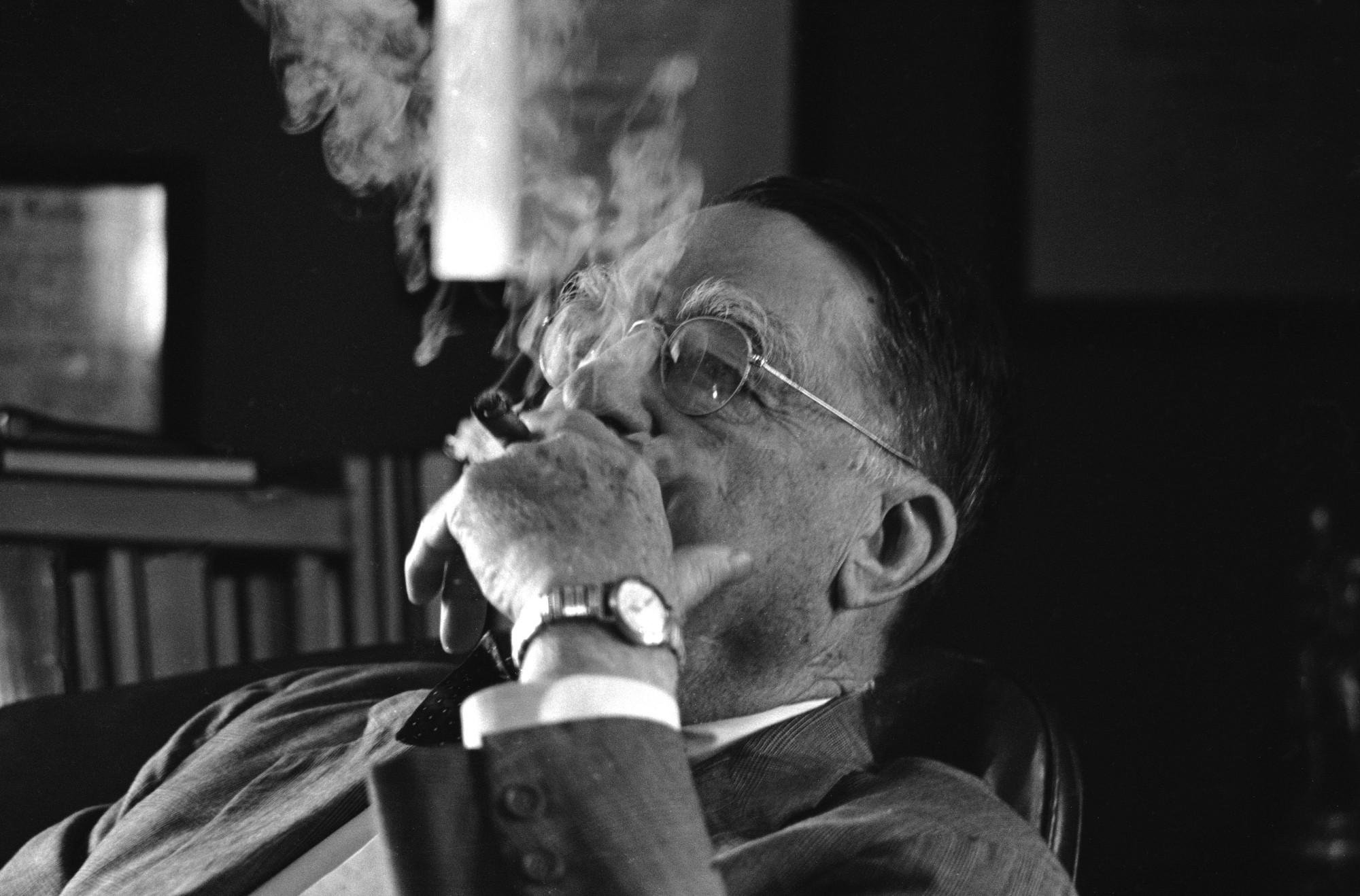
Branch Rickey
Branch Rickey was a visionary baseball executive best known for breaking Major League Baseball’s color barrier by signing Jackie Robinson to the Brooklyn Dodgers in 1947. Rickey’s bold decision challenged entrenched racial segregation, paving the way for integration in sports. He also revolutionized the game with innovations like the farm system, which developed young talent for professional teams. A devout Christian, Rickey’s actions were driven by moral conviction and a belief in equality. His profound impact on baseball and society cemented his legacy as one of the most influential figures in sports history. Getty Images / Nostalgic America, Inc.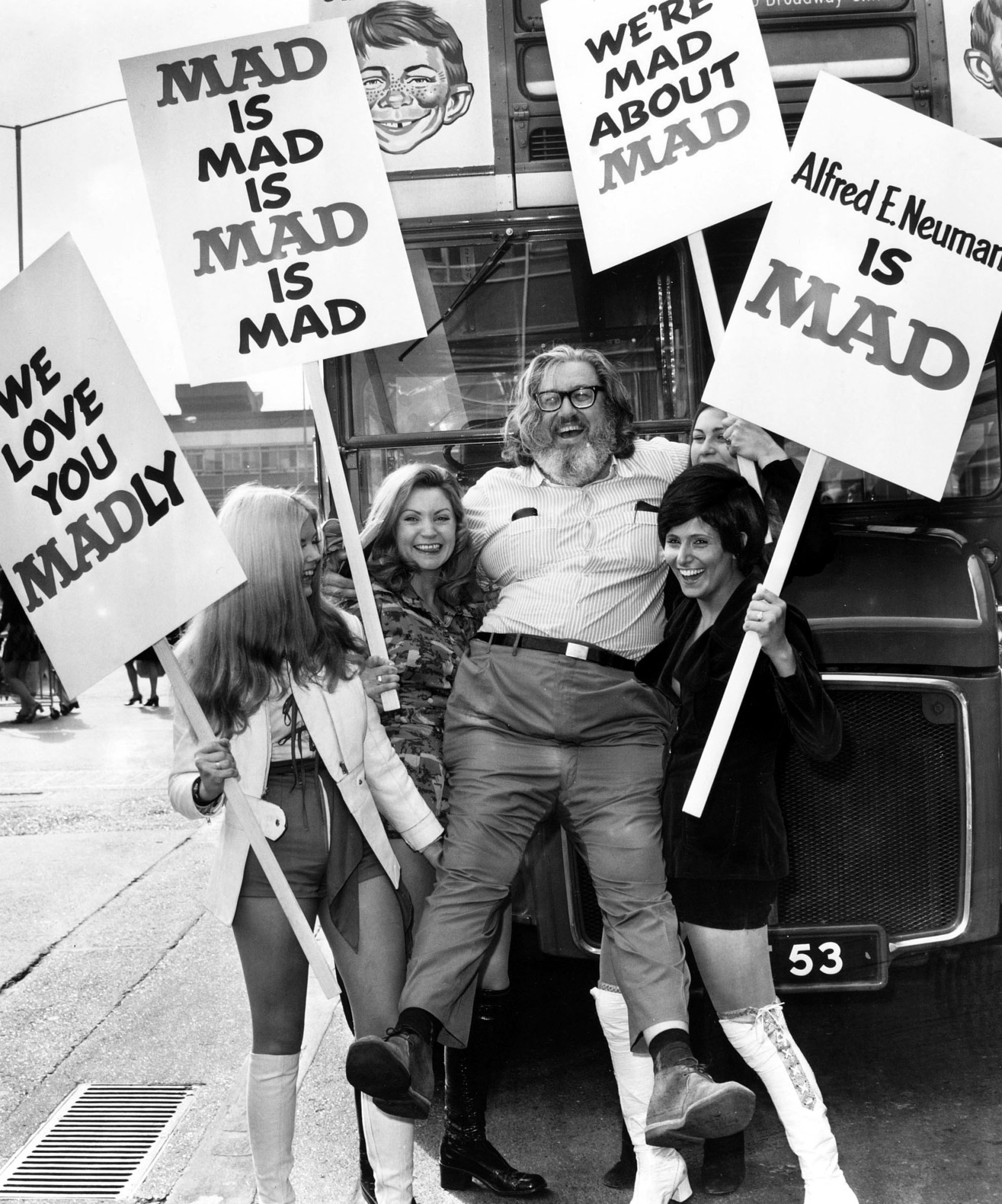
MAD Magazine CreatorHarvey Kurtzman
Harvey Kurtzman, the creator of MAD magazine, transformed American satire and humor with the magazine’s debut in 1952. Known for its irreverent take on politics, pop culture, and advertising, MAD became a cultural phenomenon, shaping generations of comedians and satirists. Kurtzman’s innovative editing and visual style laid the foundation for MAD’s success, while artists like Don Martin and writers like Al Jaffee helped define its voice. The magazine’s trademark “Spy vs. Spy” and Alfred E. Neuman mascot became iconic symbols of countercultural humor. Kurtzman’s legacy endures as a pioneer of satirical publishing. Getty Images / Nostalgic America, Inc.
Young Bill Gates and Microsoft
In 1975, a young Bill Gates co-founded Microsoft with Paul Allen, transforming personal computing. The pair developed BASIC software for the Altair 8800, marking the start of a technology empire. Gates, a Harvard dropout, spearheaded Microsoft’s growth with innovations like MS-DOS and Windows, which revolutionized operating systems and became industry standards. By the 1980s, Gates had established Microsoft as a tech giant, laying the groundwork for the modern digital age. His vision for accessible computing reshaped industries, earning him recognition as one of history’s most influential entrepreneurs. Getty Images / Nostalgic America, Inc.
Hyatt Regency Atlanta – John Portman innovative architect
Opened in 1967, the Hyatt Regency Atlanta was designed by visionary architect John Portman, revolutionizing hotel architecture. Its iconic 22-story atrium, the first of its kind, transformed the concept of communal spaces in hospitality design. The atrium became a signature feature, influencing hotels worldwide. Portman’s emphasis on light, openness, and integration of public areas redefined urban luxury. The hotel played a pivotal role in Atlanta’s emergence as a convention hub and remains an architectural marvel. Portman’s innovation bridged aesthetics and functionality, setting new standards in modern architecture. Getty Images / Nostalgic America, Inc.
Heart Surgeon Michael DeBakey
Michael DeBakey, a pioneering heart surgeon, revolutionized cardiovascular medicine with groundbreaking procedures and innovations. His contributions included the development of the Dacron graft for repairing blood vessels and the first successful coronary bypass surgery. Based at Baylor College of Medicine, DeBakey trained generations of surgeons and advanced medical technology. His work extended to creating the mobile army surgical hospital (MASH) during World War II, saving countless lives. DeBakey’s legacy as a medical trailblazer endures, earning him numerous accolades, including the Presidential Medal of Freedom. His dedication transformed the treatment of heart disease and surgical care. Getty Images / Nostalgic America, Inc.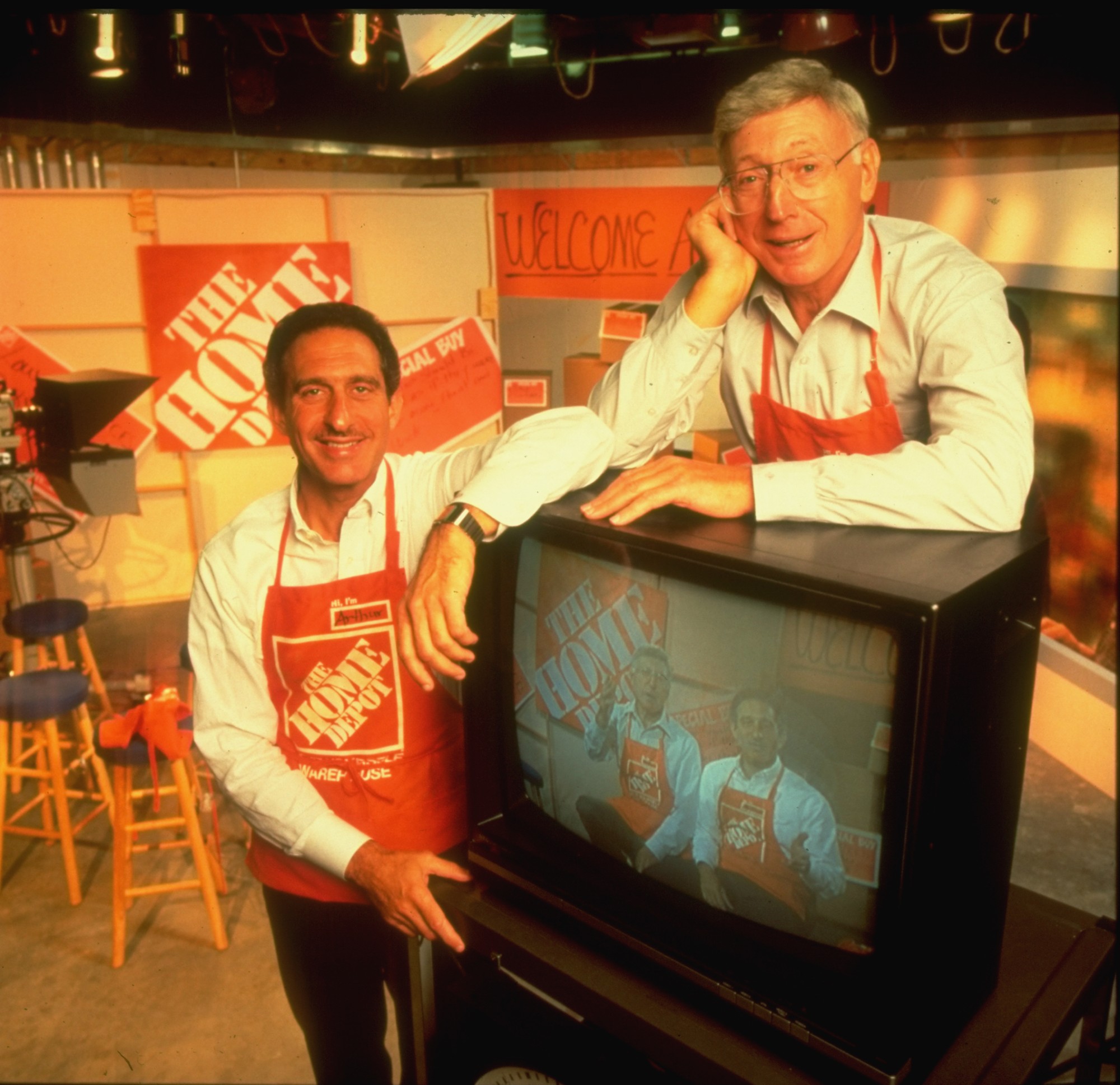
Home Depot opens it's doors in Atlanta to rave reviews!
Home Depot, the world’s largest home improvement retailer, was founded in Atlanta, Georgia, in 1978 by Bernie Marcus and Arthur Blank. Their vision was to create a store where customers could find everything for DIY projects at affordable prices. The first two stores opened in 1979, featuring vast warehouse layouts and knowledgeable staff, setting a new standard in retail. Headquartered in Atlanta, Home Depot’s rapid growth revolutionized home improvement, making tools, materials, and advice accessible to homeowners and professionals alike. Its success turned it into a Fortune 500 company and a cornerstone of Atlanta’s economic development. Getty Images / Nostalgic America, Inc.
Craziest Promotion Ever! Disco Demolition Night in Chicago
Disco Demolition Night, held at Chicago’s Comiskey Park on July 12, 1979, became a notorious event in pop culture history. Organized by local DJ Steve Dahl, the promotion offered fans discounted tickets if they brought disco records to be destroyed between games of a doubleheader. The anti-disco stunt spiraled into chaos as fans stormed the field, leading to a riot and the forfeit of the second game. While it symbolized the cultural backlash against disco, critics viewed it as reflecting deeper societal tensions. The event remains a cautionary tale of mob mentality and unintended consequences. Getty Images / Nostalgic America, Inc.
Times Square at Night in the 1950s
Times Square in the 1950s was a vibrant hub of neon lights, bustling theaters, and eclectic crowds. Known as the "Crossroads of the World," it showcased iconic signs advertising brands like Coca-Cola and Camel cigarettes. Broadway theaters flourished alongside movie palaces, drawing locals and tourists alike. The era also saw a mix of glamour and grit, as Times Square was both a cultural epicenter and home to seedy establishments. Despite its contrasts, the 1950s marked a romanticized period in Times Square’s history, capturing the spirit of post-war optimism and the energy of a rapidly modernizing New York City. Getty Images / Nostalgic America, Inc.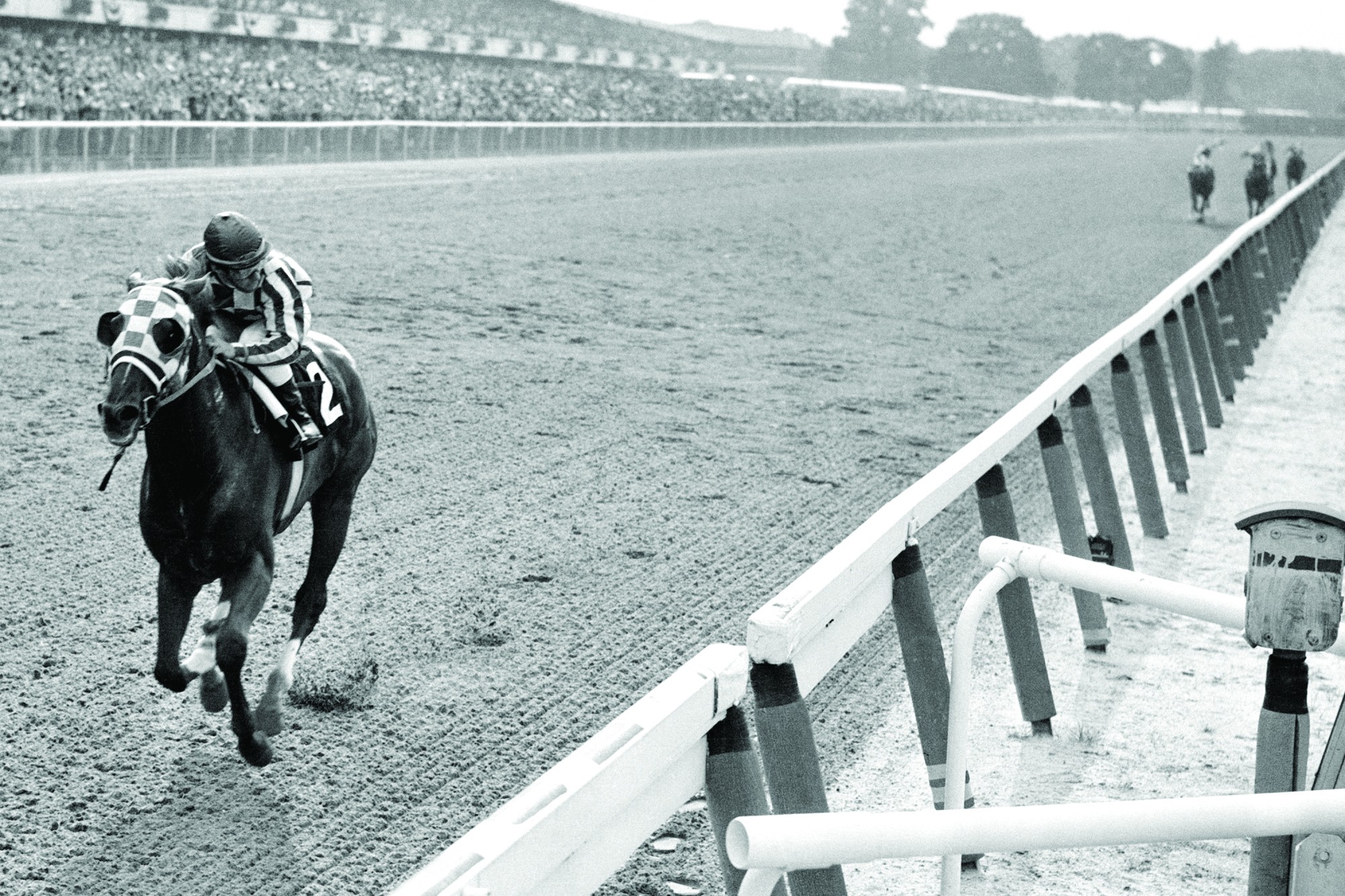
Secretariat Wins the Belmont Stakes by 31 lengths
On June 9, 1973, Secretariat delivered one of the most legendary performances in horse racing history by winning the Belmont Stakes. The thoroughbred completed the race in 2:24, setting a world record for 1.5 miles that still stands. His 31-length victory secured the Triple Crown, ending a 25-year drought for the prestigious title. Secretariat’s dominance captivated the nation, earning him comparisons to the greatest athletes of all time. Dubbed “Big Red” for his striking chestnut coat, Secretariat became a symbol of excellence and grace, with his Belmont win cementing his legacy as one of the greatest racehorses ever. Getty Images / Nostalgic America, Inc.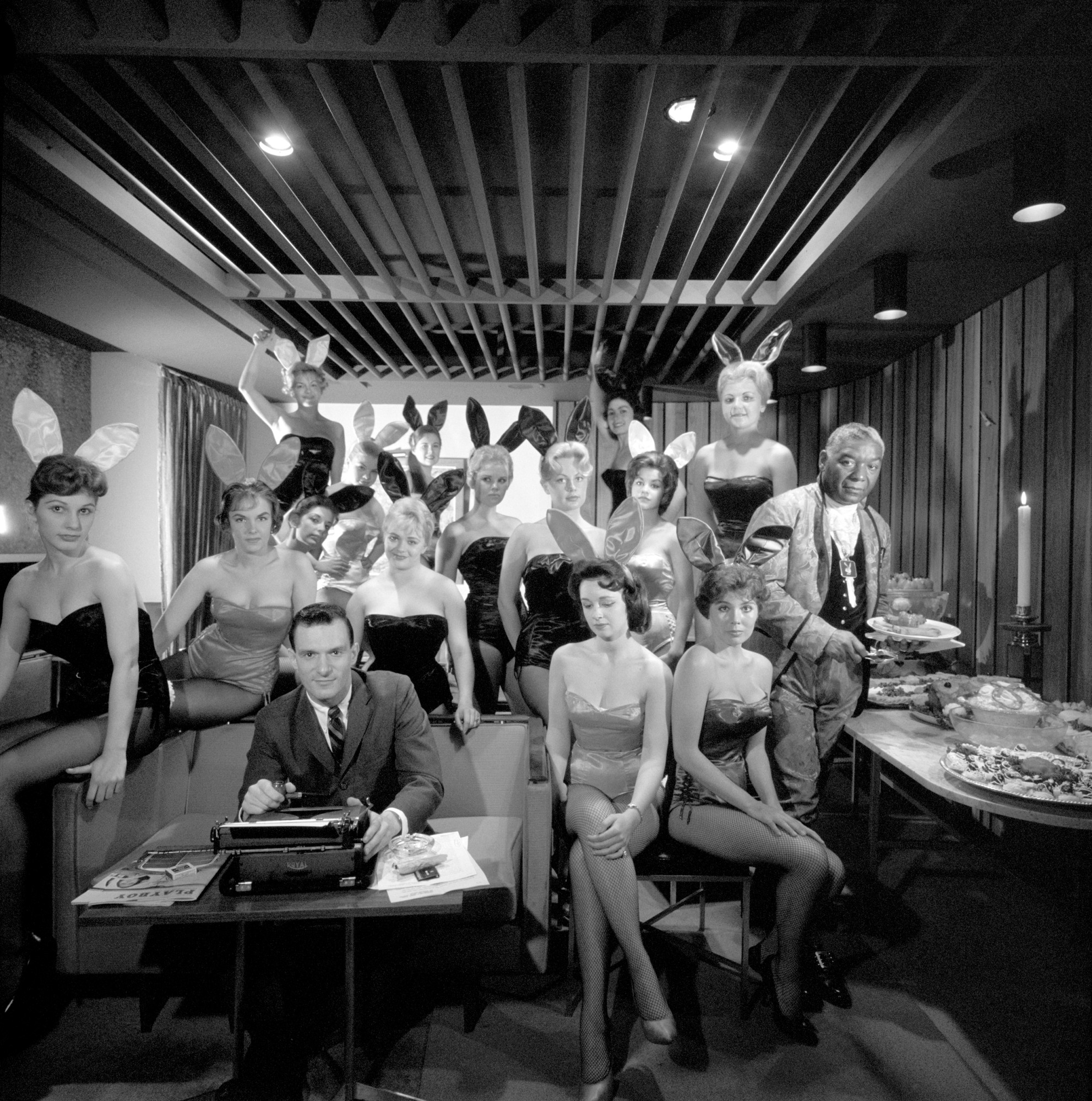
Hugh Hefner - Playboy Magazine and Playboy Clubs Founder
Hugh Hefner founded Playboy magazine in 1953, creating an iconic brand that blended provocative imagery with intellectual content. The debut issue featured Marilyn Monroe and sold over 50,000 copies. Hefner expanded the brand with Playboy Clubs, opening the first in Chicago in 1960. Known for their glamorous Bunnies and upscale ambiance, the clubs became cultural hotspots. Hefner championed sexual liberation and free speech, though his empire also faced criticism. Playboy shaped post-war American culture, pushing boundaries of expression while sparking debates on gender and media ethics. Hefner’s vision left an indelible mark on publishing and entertainment. Getty Images / Nostalgic America, Inc.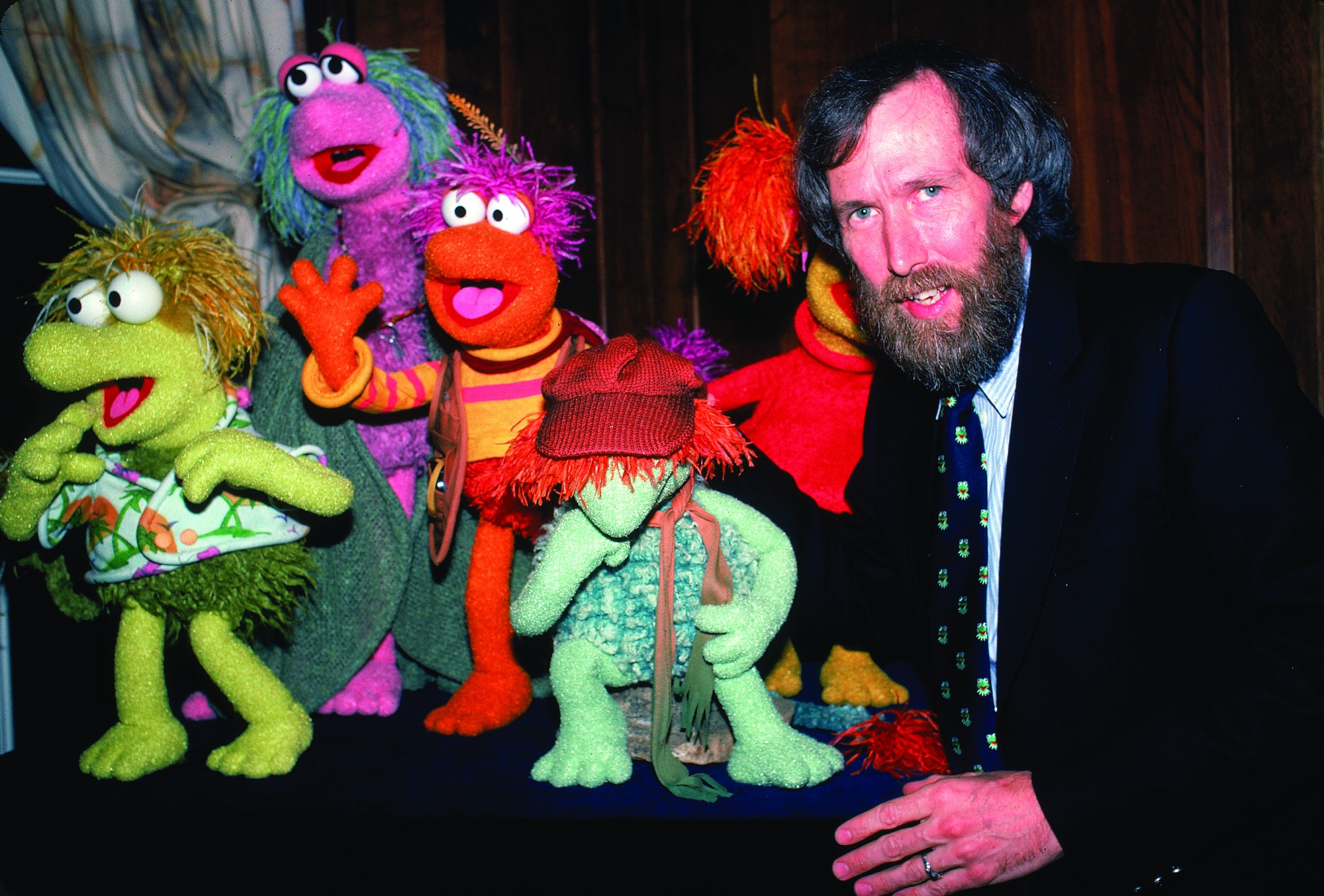
Jim Henson creator of the Muppets
Jim Henson, the legendary puppeteer and creator of the Muppets, revolutionized children’s entertainment with his whimsical characters and storytelling. Henson’s career began with Sam and Friends before his creations, like Kermit the Frog and Miss Piggy, became global icons on The Muppet Show. He also brought innovation to television with Sesame Street, fostering education and inclusion. Henson expanded his vision with films like The Dark Crystal and Labyrinth, showcasing his artistic depth. Known for his creativity and gentle humor, Henson’s work continues to inspire audiences of all ages, leaving a legacy of joy and imagination. Getty Images / Nostalgic America, Inc.
George Brett Pine Tar Game
The Pine Tar Incident occurred on July 24, 1983, during a game between the Kansas City Royals and New York Yankees. Royals star George Brett hit a dramatic two-run home run in the ninth inning, but Yankees manager Billy Martin contested the amount of pine tar on Brett’s bat. The umpires ruled the home run invalid, leading Brett to storm out of the dugout in a now-iconic display of outrage. The decision was later overturned, and the Royals won the game. The incident remains one of baseball’s most memorable controversies, highlighting the quirks and passion of the sport. Getty Images / Nostalgic America, Inc.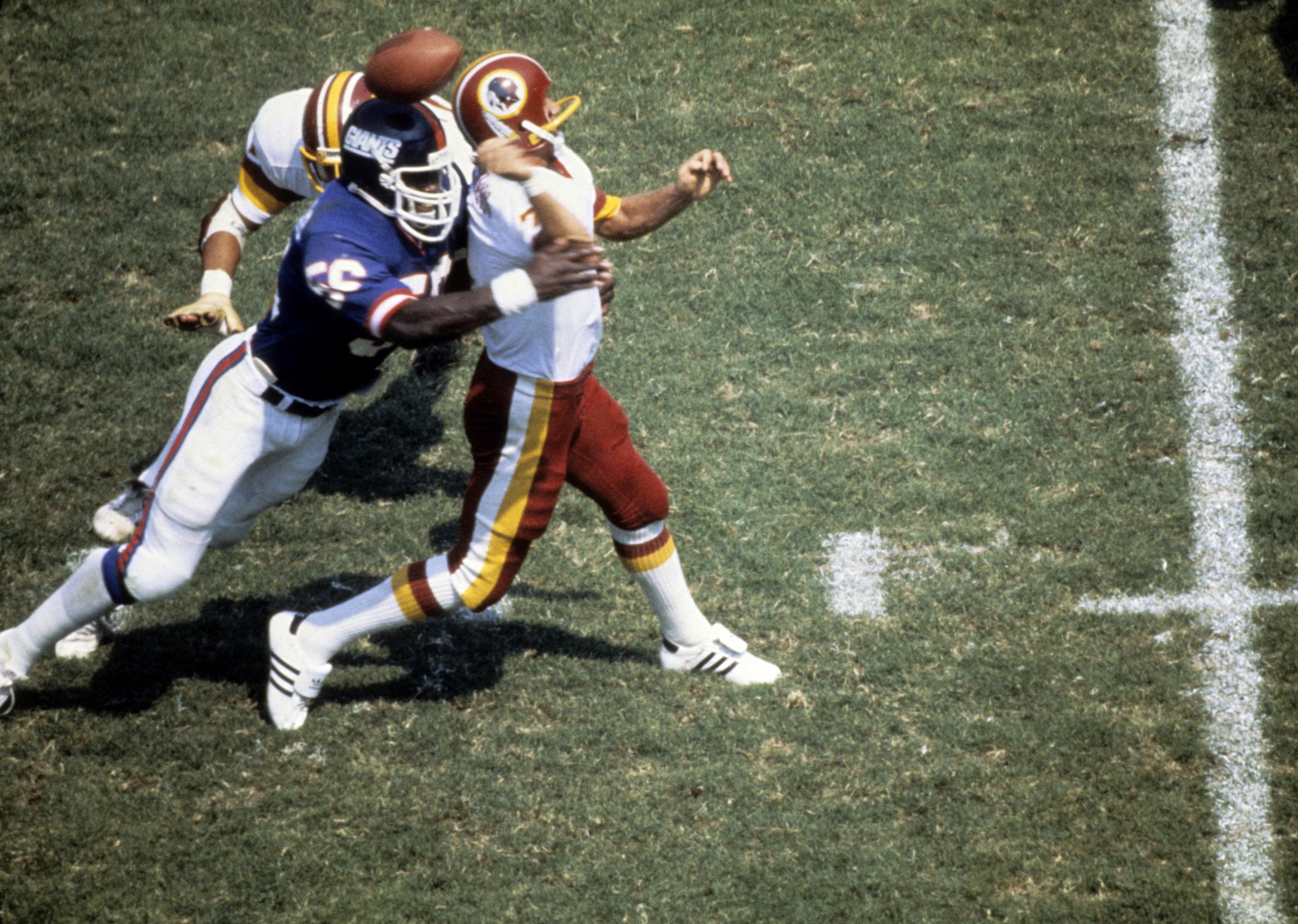
Lawrence Taylor Hits Joe Theismann and Breaks his Leg in two
On November 18, 1985, during a Monday Night Football game, New York Giants linebacker Lawrence Taylor delivered a career-altering hit to Washington quarterback Joe Theismann. The tackle resulted in a gruesome leg injury, ending Theismann’s 12-year NFL career. Taylor’s immediate reaction, signaling for medical help, underscored the severity of the incident. The play became a defining moment in NFL history, highlighting the physical risks of football. Despite the tragedy, Theismann transitioned to a successful broadcasting career, and Taylor’s dominant defensive legacy continued to grow, earning him recognition as one of the greatest linebackers of all time. Getty Images / Nostalgic America, Inc.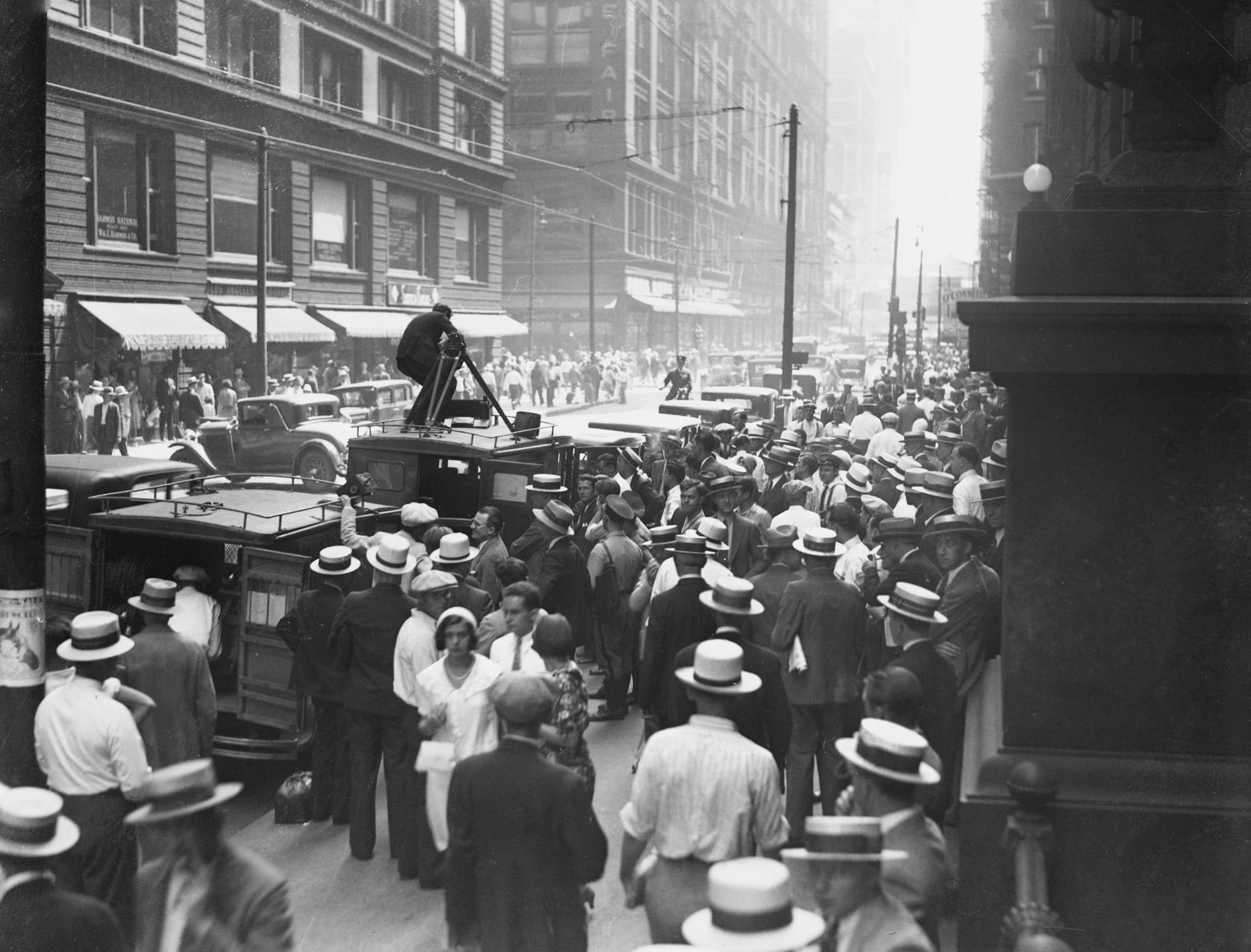
Al Capone’s Trial in Chicago
Al Capone, one of America’s most notorious gangsters, faced trial in Chicago in 1931 for tax evasion. Despite his violent criminal empire, which included bootlegging, gambling, and extortion, federal agents focused on his financial crimes to bring him down. The trial garnered massive public attention, with Capone famously attempting to bribe jurors before the judge swapped them. Convicted and sentenced to 11 years in prison, Capone’s downfall marked a victory for law enforcement during Prohibition. The trial signaled the beginning of the end for organized crime’s unchecked influence, cementing Capone’s infamy in American history. Getty Images / Nostalgic America, Inc.